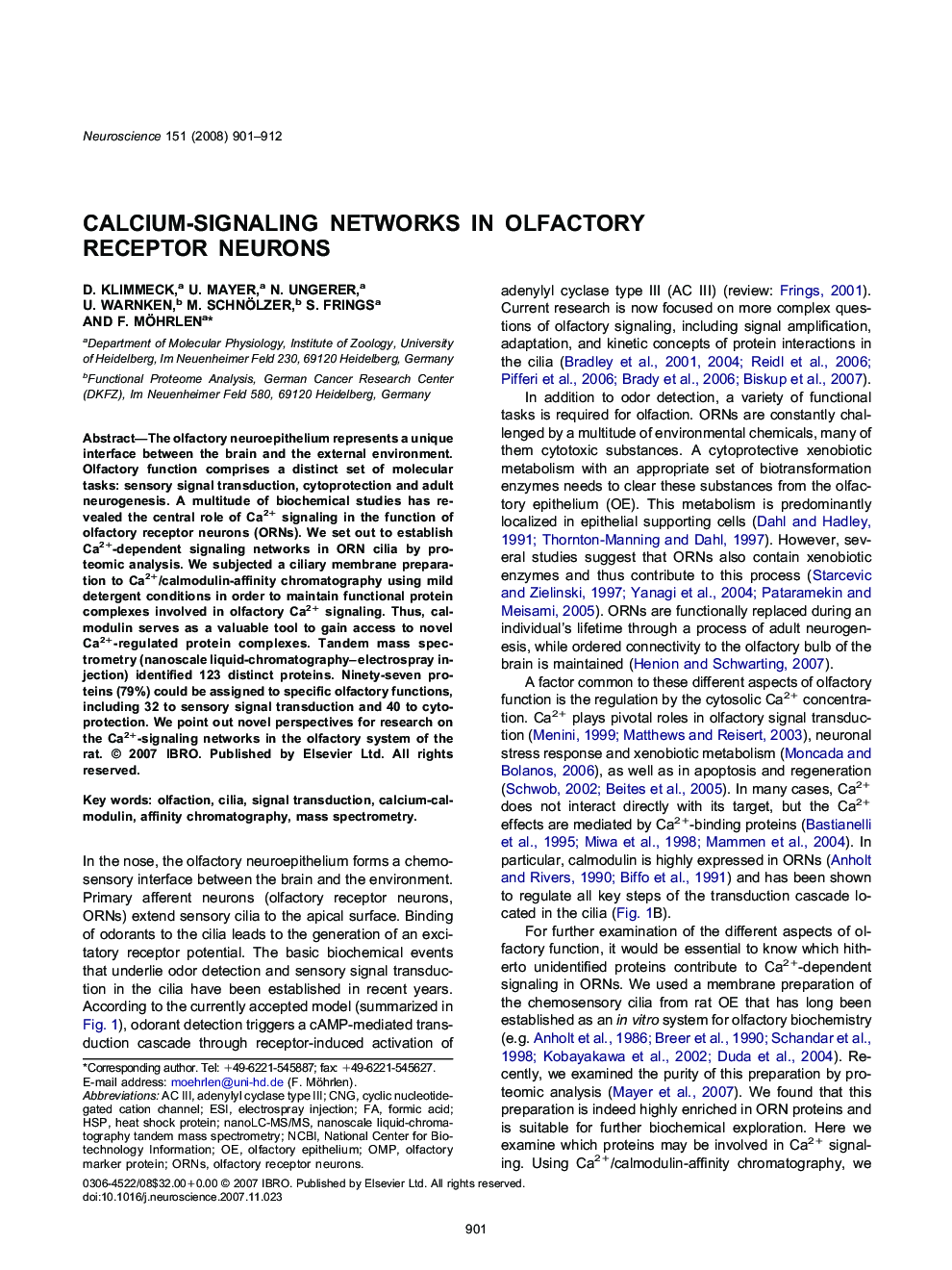| Article ID | Journal | Published Year | Pages | File Type |
|---|---|---|---|---|
| 4340852 | Neuroscience | 2008 | 12 Pages |
The olfactory neuroepithelium represents a unique interface between the brain and the external environment. Olfactory function comprises a distinct set of molecular tasks: sensory signal transduction, cytoprotection and adult neurogenesis. A multitude of biochemical studies has revealed the central role of Ca2+ signaling in the function of olfactory receptor neurons (ORNs). We set out to establish Ca2+-dependent signaling networks in ORN cilia by proteomic analysis. We subjected a ciliary membrane preparation to Ca2+/calmodulin-affinity chromatography using mild detergent conditions in order to maintain functional protein complexes involved in olfactory Ca2+ signaling. Thus, calmodulin serves as a valuable tool to gain access to novel Ca2+-regulated protein complexes. Tandem mass spectrometry (nanoscale liquid-chromatography–electrospray injection) identified 123 distinct proteins. Ninety-seven proteins (79%) could be assigned to specific olfactory functions, including 32 to sensory signal transduction and 40 to cytoprotection. We point out novel perspectives for research on the Ca2+-signaling networks in the olfactory system of the rat.
